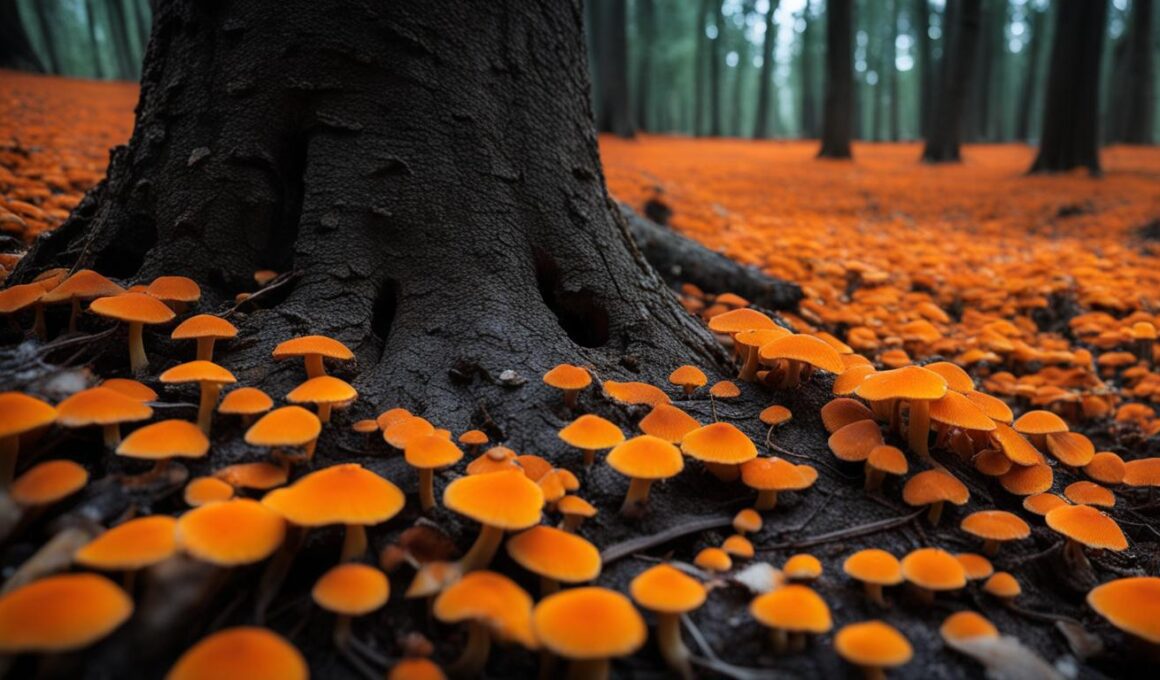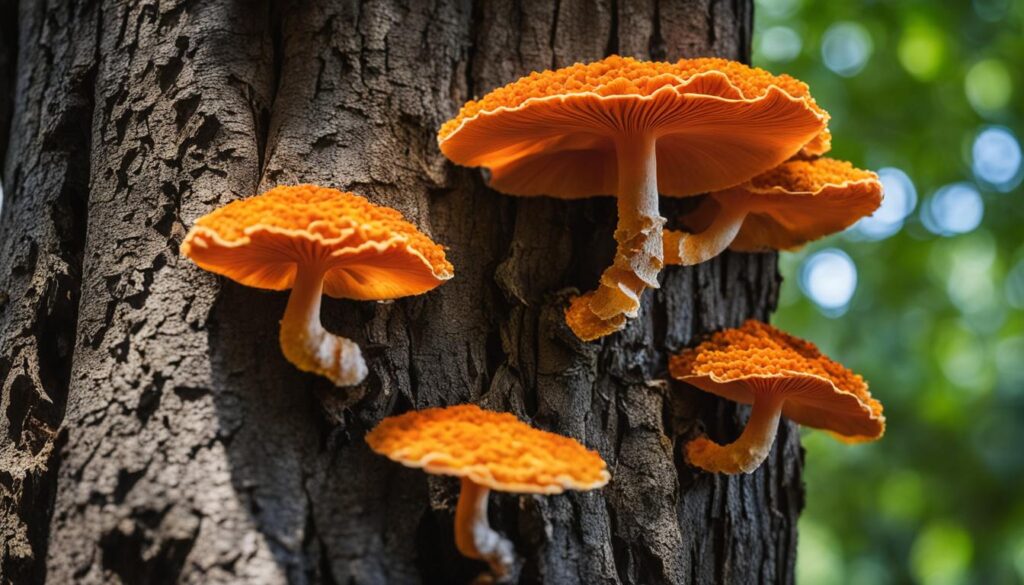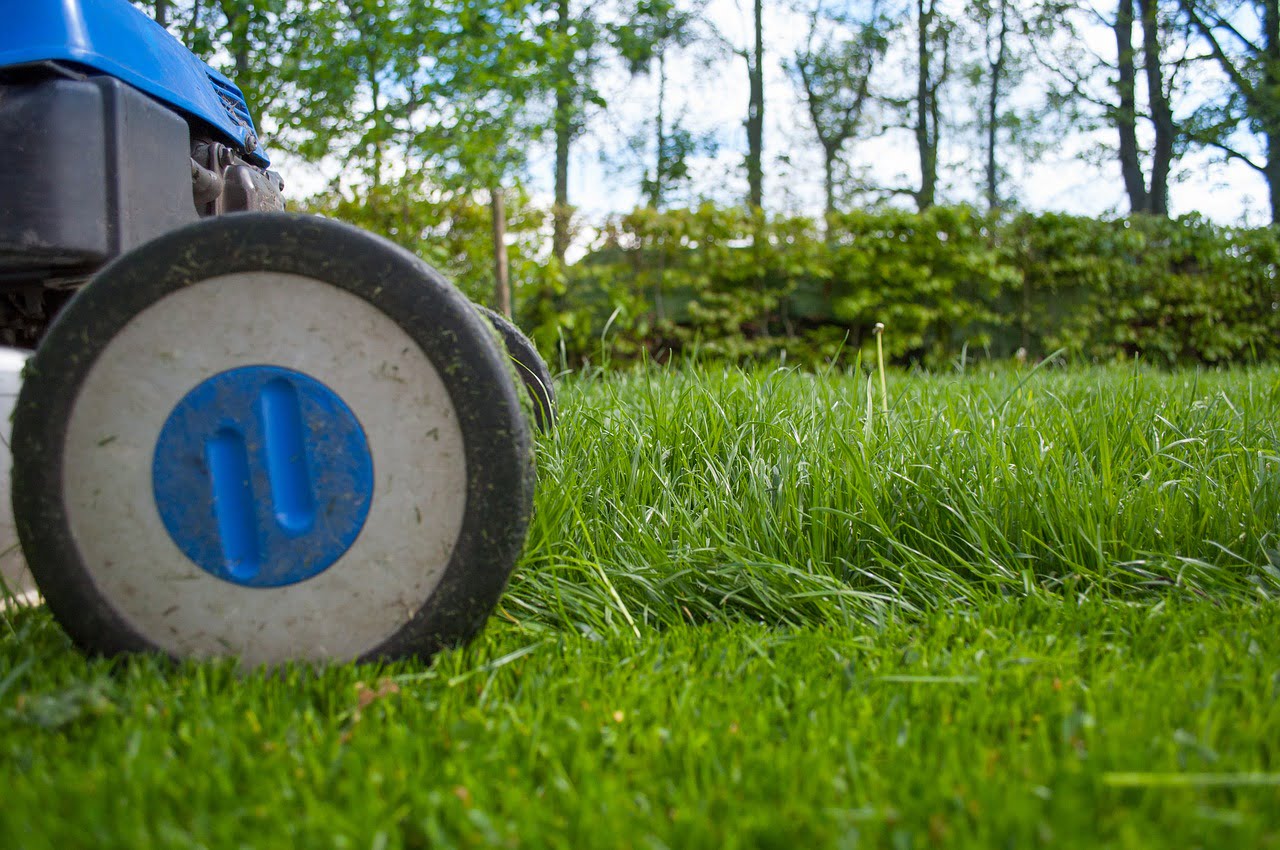Have you ever noticed an orange fungus on a tree? It might appear as a slimy substance oozing from a wound on a hardwood tree. Don’t worry, it’s not a cause for alarm! This fungus, known as Fusicolla merismoides, colonizes the sap that leaks from a tree’s wound, giving it an orange color. While it may look concerning, this orange slime is harmless and does not harm the tree’s wood or foliage.
This fungus thrives in the spring when the sap is rising and leaking from wounds on tree trunks or limbs. So, if you spot this orange fungus on your tree during this season, there’s no need to panic.
In this article, we will explore different types of orange fungus on trees, discuss their causes, and provide treatment tips to ensure your trees stay healthy and vibrant. So, let’s dive into the fascinating world of orange fungus on trees!
Types of Orange Fungus on Trees
When it comes to orange fungus on trees, there are two main types that you should be aware of. Understanding these types can help you identify and address any issues you may encounter with your trees. Let’s take a closer look:
1. Fusicolla Orange Slime
Fusicolla orange slime is a type of orange fungus that commonly appears as an orange, slimy substance oozing from a wound on hardwood trees. Although it may look alarming, this fungus is harmless and does not cause any damage to the tree’s wood or foliage.
This slime thrives during spring when tree sap rises and leaks from wounds. It grows on carbohydrates and moisture present in the sap. Despite its appearance, Fusicolla orange slime does not pose any significant threat to your tree’s health.
2. Cedar Apple Rust
Cedar apple rust is another type of orange fungus that can be found on trees. It typically forms orange balls or tendrils on cedar or juniper trees, which then spread to apple or crabapple trees if not managed. This fungus can cause yellow spots or growth on the leaves and can also affect fruit quality.
Identifying cedar apple rust early is crucial to prevent its spread and minimize damage to your apple or crabapple trees. Taking appropriate measures to manage this fungus can help maintain the health and productivity of your trees.
In conclusion, understanding the different types of orange fungus that can affect trees is essential for appropriate identification and treatment. While Fusicolla orange slime is harmless and requires no treatment, cedar apple rust can harm your fruit trees if left unchecked. Now that you are familiar with these types, you can take the necessary steps to protect your trees and ensure their longevity.
Treating Orange Fungus on Trees
Treating orange fungus on trees depends on the type of fungus. If you’re dealing with Fusicolla orange slime, no treatment is necessary as it is harmless. This orange slime is a natural occurrence that does not cause any harm to the tree’s wood or foliage. It thrives in the springtime as the sap is rising and leaking from wounds on the tree.
To prevent the occurrence of Fusicolla orange slime, it’s essential to practice good tree care. This includes proper pruning techniques and wound management. By keeping tree wounds clean and properly sealed, you can minimize the chances of orange slime developing.
However, if you’re dealing with cedar apple rust, a different approach is needed. Cedar apple rust is a fungus that can affect fruit trees, particularly apple or crabapple trees. To treat cedar apple rust, it is recommended to focus on the infected apple or crabapple tree itself.
One effective treatment method for cedar apple rust is the application of fungicide. It’s important to apply the fungicide according to the timing recommendations provided by an ISA Certified Arborist®. This will ensure that the treatment is administered at the right stage in the fungus’s life cycle, maximizing its effectiveness.
In addition to fungicide application, removing juniper trees near fruit trees can also help manage the spread of cedar apple rust. Juniper trees serve as an alternate host for the fungus, allowing it to reproduce and infect fruit trees. By eliminating these potential hosts in close proximity to your fruit trees, you can reduce the risk of cedar apple rust spreading.
Remember, for specific treatment advice and guidance tailored to your tree’s needs, it’s always a good idea to consult with an ISA Certified Arborist®. Their expertise and knowledge will ensure that you receive the most accurate and effective recommendations for treating orange fungus on your trees.
Conclusion
Orange fungus on trees can be caused by different types of fungi, including Fusicolla orange slime and cedar apple rust. While Fusicolla orange slime is harmless and requires no treatment, cedar apple rust can affect fruit trees and may require fungicide applications for control.
To prevent the occurrence of orange fungus on trees, it is essential to practice proper tree care, such as pruning and wound management. By promptly addressing tree wounds and ensuring proper pruning techniques, you can minimize the risk of fungal colonization and subsequent orange fungus formation.
If you suspect orange fungus on your trees or require specific treatment advice, it is best to consult with an ISA Certified Arborist®. These professionals can provide tailored recommendations based on your tree’s condition and the type of fungus present, helping you protect your trees’ health and vitality.
By taking proactive measures and following expert guidance, you can effectively prevent and control orange fungus on trees, preserving their beauty and ensuring their long-term well-being.
How Can I Prevent and Treat Fungus on My Tree Similar to St. Augustine Grass Fungus?
When dealing with fungus on your tree similar to St. Augustine grass fungus, prevention and care for St. Augustine grass fungus is key. Keep trees well-pruned and properly watered to prevent excess moisture, which can contribute to fungal growth. Apply fungicides specifically designed for tree fungus to treat any existing issues.










